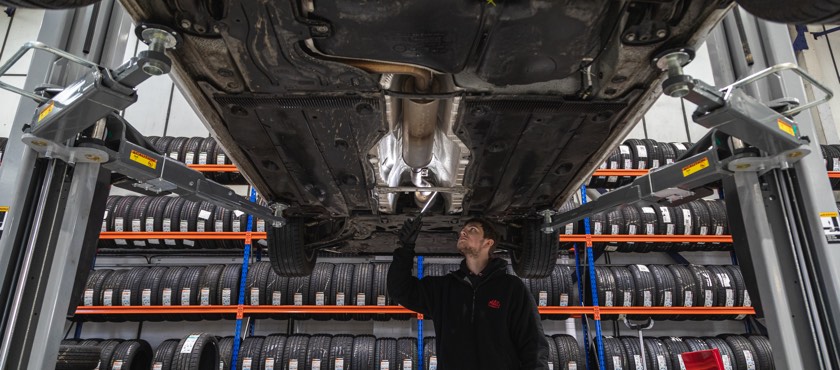Diesel Particulate Filter (DPF): What You Need to Know
- Diesel Particulate Filters (DPF) reduce emissions in diesel vehicles by burning soot particles.
- High exhaust temperatures are needed so typically achieved during long drives. Regular short trips can prevent this process taking place.
- Dashboard warning lights signal DPF issues; amber for regeneration attempts, red for blockages.
- Removing a DPF is illegal and leads to MOT test failure.

If you own a diesel vehicle, the chances are it’s fitted with a diesel particulate filter (DPF). In 2009, manufacturers began fitting DPFs to all diesel vehicles as a way of reducing the emission of toxic particulates from their exhausts. However, they still remain a mystery to many motorists, which is why we’re here to help. We’re going to cover exactly what a DPF is, some key facts that you need to know about owning a car with one, and what to do if your filter experiences problems.
What is a diesel particulate filter?
Unlike petrol engines, diesel engines create a lot of soot as a byproduct of the combustion process. This fine, almost invisible soot is extremely harmful to the environment and can even cause some significant health issues if inhaled enough. The DPF, then, was created with the goal of trapping and destroying these harmful particulates before they can reach daylight. They do this by simply exposing the soot to extremely high temperatures and burning them away, turning the dangerous particulates into harmless ash. This process is called DPF regeneration.
Why diesel engines can be bad for short trips
While DPF regeneration is an ingenious process, it’s not without its flaws. That is, for the process to occur, the exhaust gases must get extremely hot (around 500°C). To achieve this, you’re going to have to drive at speeds above 40mph for several minutes at a time, something that isn’t always easy to do if you live in the city.
So, if you rarely find yourself taking long trips, your exhaust system won’t be getting hot enough for this passive regeneration to occur. DPFs can also actively regenerate (heat up the exhaust system on its own), but the car must at least be moving constantly for this process to be carried out, something that isn’t always achievable if you regularly encounter stop-start traffic.
How do I know if my diesel particulate filter is blocked?
If you find yourself unable to travel the amount required for a DPF to do its job, you could end up with a DPF blockage. But don’t worry, you won’t have to go and inspect the filter itself, you should be able to work this out by paying attention to warning lights on your dashboard. Typically, an amber light will indicate that passive regeneration wasn’t possible, so active regeneration is now being attempted. A red warning light, however, indicates that the process has failed and a blockage has occurred. The best thing to do in such an instance is to take your car to a trusted garage. Normally, a DPF filter can be simply cleaned or repaired, but if the damage is really bad, it could well need replacing.
Can I remove the diesel particulate filter?
No you cannot just remove a DPF. These are required by law, and a DPF check has been part of the MOT test since February 2014. If the filter has been removed, the car will simply fail the MOT. You may find individuals online claiming that they offer a DPF removal service, but they should be avoided at all costs.
—
If you need some help with your DPF, look no further than Mr Tyre – we carry out a range of servicing and MOT services at our centres throughout Central England, and will have you back on the road in no time. With a dedicated team of specialists and over 48 years of experience in the industry, we really are the premier option. For your nearest centre, simply use our branch finder tool.

